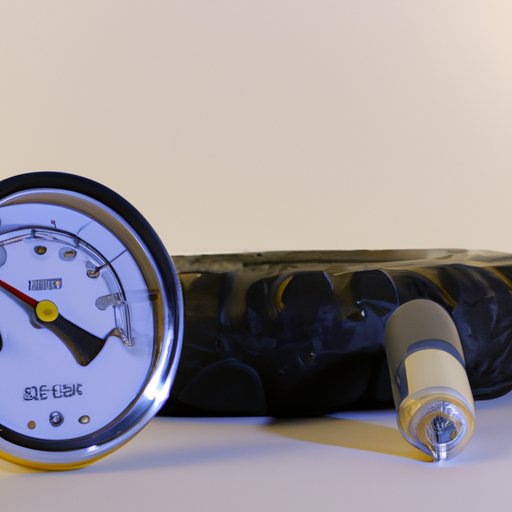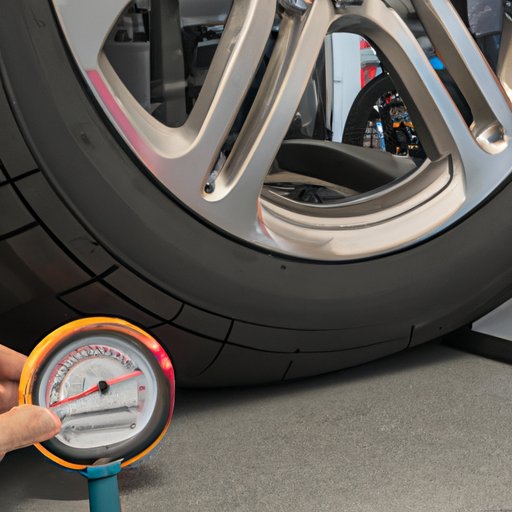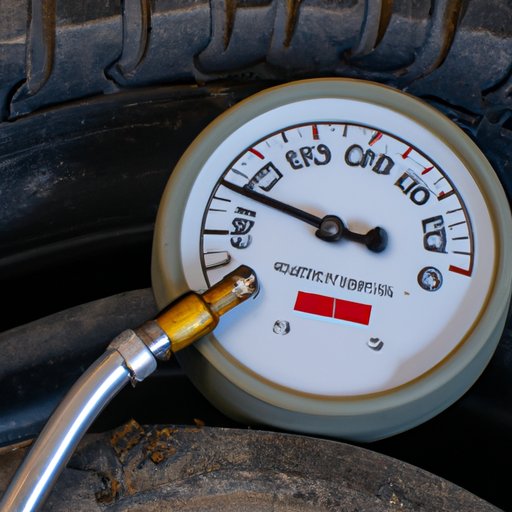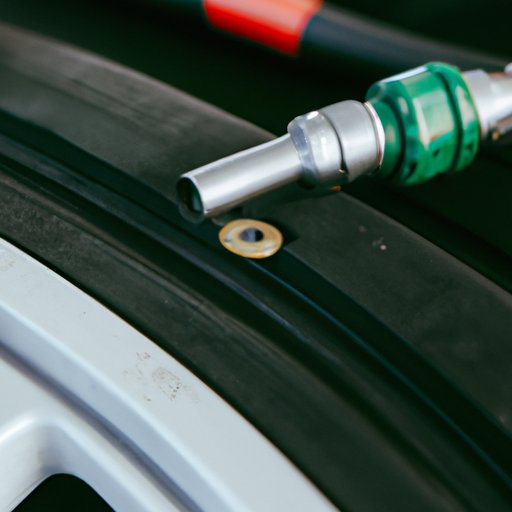
An Overview of Tire Pressure Sensor Technology
Tire pressure sensors are a sophisticated technology that can be found on most modern cars. They are designed to monitor tire pressure and alert drivers when there is a problem. While many drivers may not think about them, tire pressure sensors play an important role in vehicle safety and performance.
But what exactly is a tire pressure sensor? How does it work? And why is it important? This article will explore all the answers to these questions.
What is a tire pressure sensor?
A tire pressure sensor is a small device that is installed inside a car’s tire. It monitors the pressure of the tire and sends data to the car’s computer system. This data is then used to alert the driver if there is a problem with the tire pressure.
Tire pressure sensors come in two types: direct and indirect. Direct tire pressure sensors measure the pressure directly inside the tire, while indirect tire pressure sensors measure the pressure outside the tire. Both types of sensors are designed to detect changes in tire pressure, which can indicate a potential problem.
Benefits of tire pressure sensors
There are several benefits of having tire pressure sensors installed in your car. The most important benefit is improved safety. Tire pressure sensors can help detect underinflated or overinflated tires, which can lead to dangerous driving conditions. Additionally, tire pressure sensors can help improve fuel efficiency and extend the life of your tires.
Different types of tire pressure sensors
Tire pressure sensors come in a variety of shapes and sizes. Some sensors are integrated into the tire itself, while others are external devices that attach to the wheel rim. There are also wireless tire pressure sensors that are designed to communicate with the car’s computer system.

Exploring the Science Behind Tire Pressure Sensors
Now that you have a basic understanding of what tire pressure sensors are, let’s take a closer look at the science behind them. How do tire pressure sensors work? What physics principles are involved? This section will answer these questions.
How do tire pressure sensors work?
Tire pressure sensors use a combination of air pressure and temperature sensors to measure the pressure inside the tire. When the tire pressure drops below a certain threshold, the sensor sends a signal to the car’s computer system, which then alerts the driver.
The sensors are designed to be sensitive enough to detect even small changes in pressure. This means that they can detect slow leaks in tires, as well as changes in pressure due to temperature fluctuations.
The physics behind tire pressure sensors
The physics behind tire pressure sensors is fairly simple. As the air pressure inside the tire increases, the sensor measures the change in pressure and sends a signal to the car’s computer system. This signal is then used to alert the driver if the pressure falls below a certain threshold.
Temperature also plays a role in how tire pressure sensors work. As the temperature decreases, the air inside the tire contracts, causing the pressure to drop. Conversely, as the temperature rises, the air expands, causing the pressure to increase.
Understanding the Components of a Tire Pressure Sensor
Now that you know how tire pressure sensors work, let’s take a look at the components that make up a tire pressure sensor. What are the key components of a tire pressure sensor? How do these components work together?
Key components of a tire pressure sensor
A tire pressure sensor consists of three main components: a transducer, a controller, and a transmitter. The transducer is responsible for measuring the pressure inside the tire. The controller processes this information and sends a signal to the transmitter, which then sends the signal to the car’s computer system.
How these components work together
The transducer measures the pressure inside the tire and sends this information to the controller. The controller then processes this information and sends a signal to the transmitter. Finally, the transmitter sends the signal to the car’s computer system, which then alerts the driver if the pressure falls below a certain threshold.
How to Install and Maintain Tire Pressure Sensors
Now that you understand the components of a tire pressure sensor, let’s take a look at how to install and maintain them. Installing tire pressure sensors can be tricky, so it’s important to follow the manufacturer’s instructions carefully. Additionally, proper maintenance can help ensure your tire pressure sensors last longer.
Step-by-step guide to installing a tire pressure sensor
Installing a tire pressure sensor is a relatively straightforward process. First, you’ll need to remove the tire from the wheel. Then, attach the sensor to the wheel using the supplied mounting hardware. Next, connect the wiring harness to the sensor and wheel. Finally, reinstall the tire and test the sensor to make sure it’s working properly.
Tips for maintaining tire pressure sensors
Maintaining your tire pressure sensors is just as important as installing them. Make sure to check the sensors regularly for any signs of damage or wear. Additionally, check the wiring connections to make sure they are securely attached. Finally, clean the sensors periodically with a soft cloth to remove any dirt or debris.

A Guide to Troubleshooting Tire Pressure Sensor Issues
Tire pressure sensors are designed to be reliable, but they can still run into problems from time to time. If you’re having trouble with your tire pressure sensors, there are a few things you can do to troubleshoot the issue.
Common problems with tire pressure sensors
Some of the most common problems with tire pressure sensors include faulty wiring, incorrect installation, and worn or damaged sensors. If your tire pressure sensors seem to be malfunctioning, it’s important to identify the cause of the problem before attempting to fix it.
How to diagnose and fix tire pressure sensor issues
To diagnose and fix tire pressure sensor issues, start by inspecting the wiring and connections. Make sure all the wires are securely connected and undamaged. If everything looks good, then check the tire pressure sensors themselves. Look for any signs of damage or wear. If the sensors are damaged, you may need to replace them.
When to call a professional for assistance
If you’re still having trouble with your tire pressure sensors after following the steps above, it’s best to call a professional. A qualified mechanic can help diagnose the issue and recommend the best course of action.
Tire pressure sensors are an important part of any vehicle. Understanding how they work, the components they contain, and how to install and maintain them is essential for ensuring your safety and the longevity of your tires.
(Note: Is this article not meeting your expectations? Do you have knowledge or insights to share? Unlock new opportunities and expand your reach by joining our authors team. Click Registration to join us and share your expertise with our readers.)
